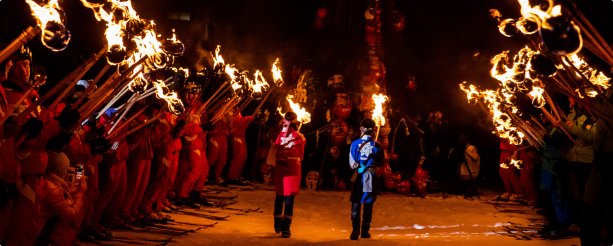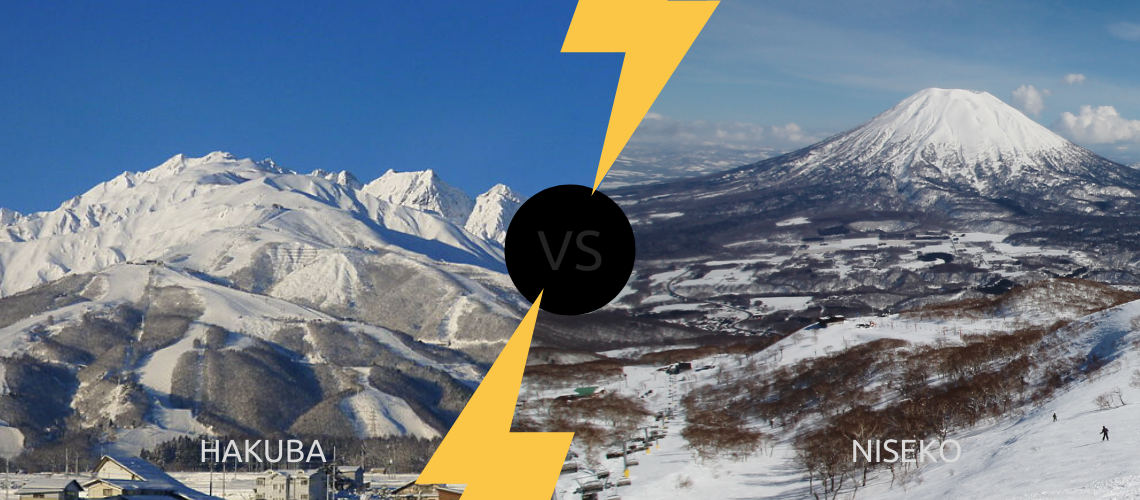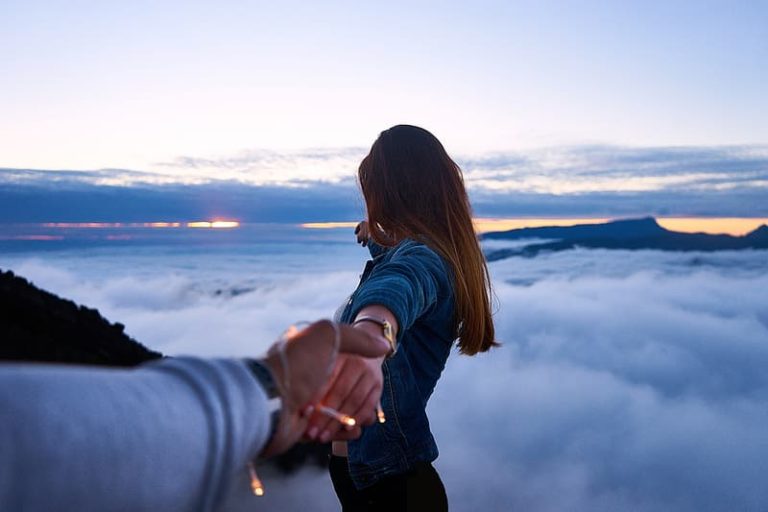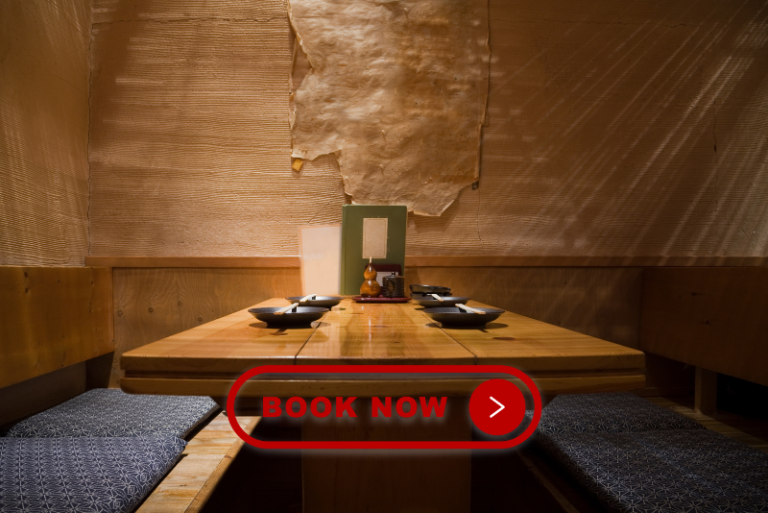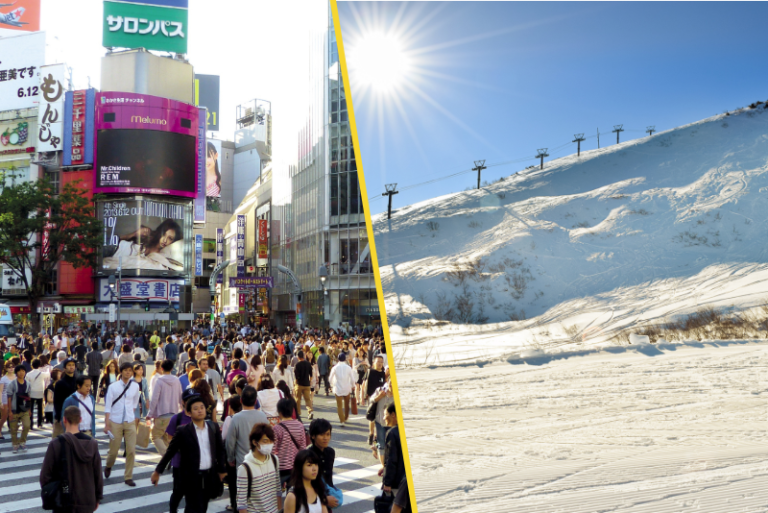Whenever you research skiing in Japan, there are two Japanese ski resorts that always seem to rise above the rest – Hakuba and Niseko.
Both have well-deserved reputations as premier ski destinations. Together, they attract over 3 million skiers a season and are known for their deep powder snow, stunning scenery, and world-class amenities.
Niseko receives more fresh snow than Hakuba, but does that make it the better resort?
Some may say yes, but there is more to consider than the annual snowfall when planning your trip. From the variety of terrain, ease of access, and cost, there are many factors to consider when choosing a ski resort.
Should you choose Hakuba or Niseko for your next trip?
To help you navigate this choice, we will compare Hakuba vs Niseko. In this article, we will dive in and show you 15 reasons why Hakuba outshines Niseko.

hakuba vs Niseko – 15 Reasons to Choose Hakuba
Here are 15 reasons why Hakuba should be at the top of your list.
1 – Steeper and More Varied Terrain
The Hakuba Valley boasts ten ski resorts. It has more terrain than Niseko and offers a better variety of slopes – from easy beginner runs to steeper, more challenging terrain. Hakuba is a paradise for skiers and snowboarders looking for diversity and excitement in their runs. Niseko has 4 resorts and less steep terrain.
2 – Easier to Access from Tokyo
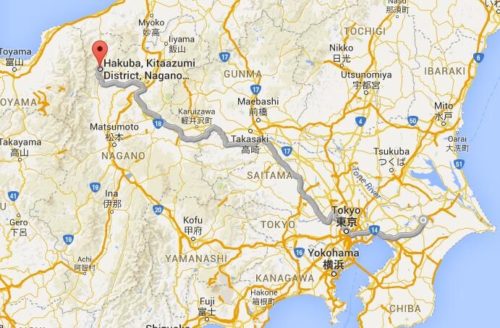 Tokyo to Hakuba
Tokyo to Hakuba
Hakuba is conveniently located just 3-5 hours from Tokyo by train or bus, making it more accessible for international travelers. You can grab a shuttle directly from the airport to your Hakuba hotel; there are no transfers and no worries about shipping luggage. Niseko, however, requires an additional flight to Sapporo adding to your trip complexity and cost.
3 – Authentic Japanese Cultural Experience
Unlike the more Western-developed Niseko, Hakuba retains a traditional Japanese charm. Visitors can immerse themselves in local culture, from staying in traditional ryokans to dining at authentic izakaya restaurants.
4 – Greater Vertical Drop
Hakuba’s Happo One offers a more vertical drop than Niseko’s Grand Hirafu. This means longer runs and more vertical feet to ski, providing an exhilarating experience for advanced skiers.
5 – Proximity to Other Ski Resorts
Hakuba’s location allows day trips to famous ski areas like Myoko, Madarao, and Nozawa. Tack on a few extra days for your trip and explore even more of Japan’s incredible ski culture.
6 – Fewer Crowds
Hakuba attracts fewer foreign visitors than Niseko, resulting in less crowded slopes, shorter lift lines, and more runs. What’s not to like?
7 – More Bluebird Days
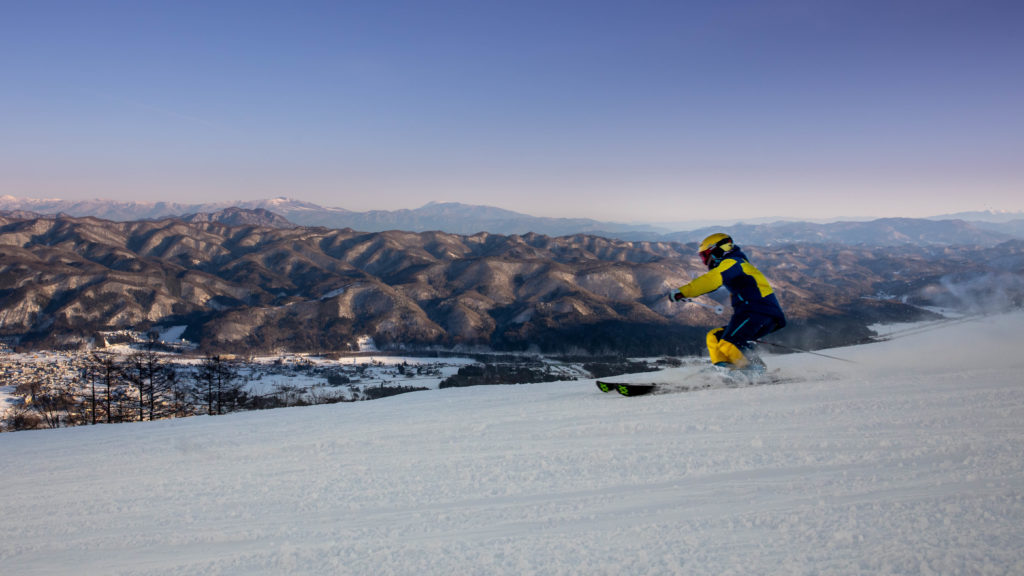 More Bluebird Days in Hakuba
More Bluebird Days in Hakuba
Hakuba experiences more bluebird days—clear skies between snowstorms—than Niseko. Hakuba’s weather means big snowfalls with bluebird skis in between. Niseko, in comparison, gets smaller, more consistent storms. Think waist-deep powder days with bluebird skies vs. knee-deep powder and low visibility.
8 – Rich History
Hakuba has a rich ski history. The village was the site of several events during the 1998 Olympics, including the ski jumping, Nordic Combined, and men’s downhill events. Visitors can explore this history by visiting the Olympic venues or checking out the Hakuba Olympic Museum.
9 – Close to Cultural Sites and Natural Hot Springs
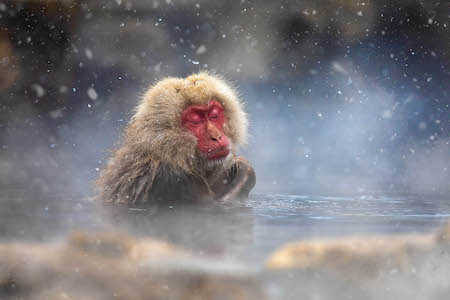
Jigokudani Snow Monkey Park
Hakuba is near cultural landmarks like Matsumoto Castle, Zenkoji, and Obuse. These nearby attractions provide excellent day-trip options and add extra value to your trip. Visitors can also take a day trip to see the famous snow monkeys at the Jigokudani Snow Monkey Park.
10 – Year-Round Activities
While Niseko and Hakuba are known for their incredible skiing, Hakuba offers a broader range of year-round activities. Visitors can enjoy hiking, mountain biking, and water sports in the summer. Both Hakuba and Niseko also offer natural hot springs, providing a relaxing experience after a day of skiing.
11 – Host of the Freeride World Tour and Backcountry Skiing
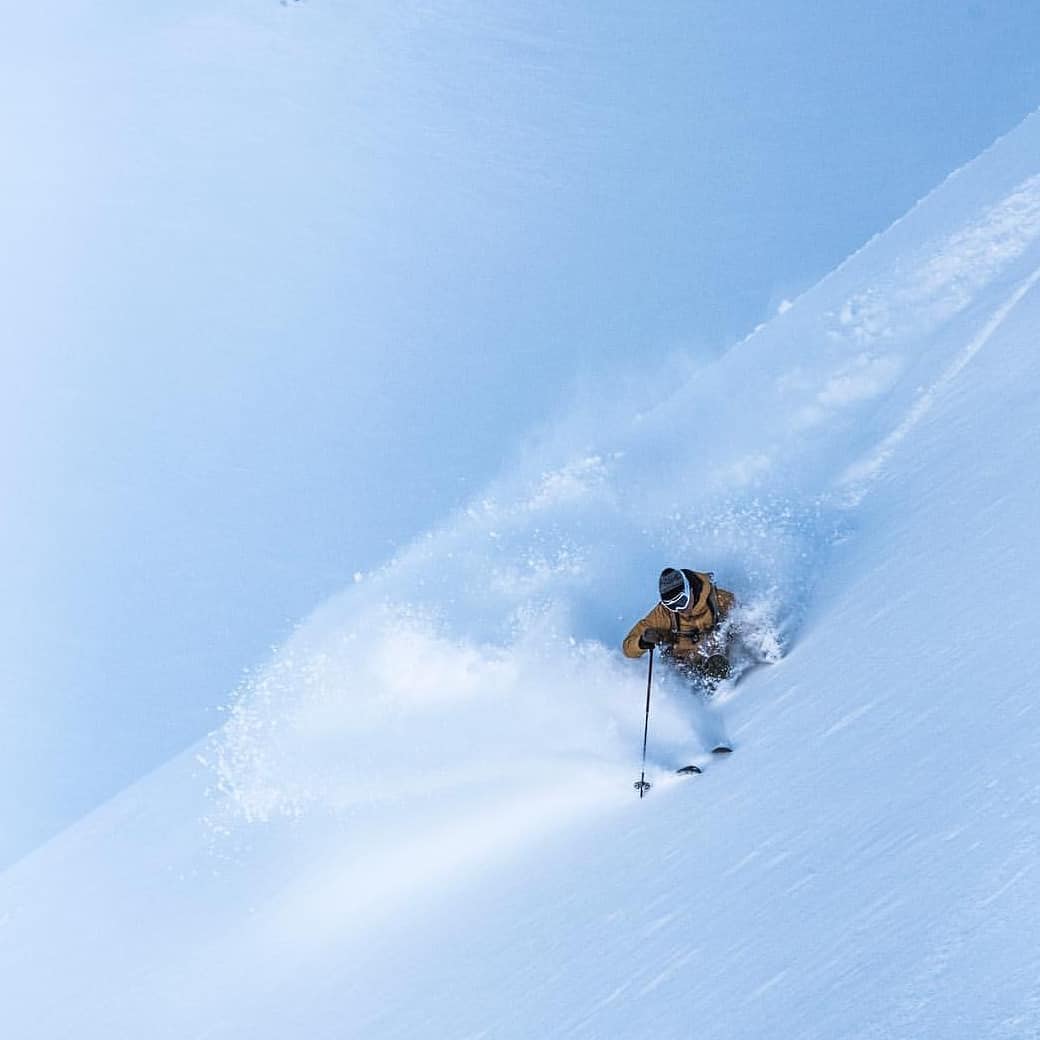
Markus Eder
Hakuba hosts the prestigious Freeride World Tour, attracting some of the world’s best big mountain skiers. The backcountry skiing in Hakuba is renowned, making it a favorite destination for the pros looking to push their limits and compete against each other.
12 – Family-Friendly Atmosphere
Hakuba offers a quieter, more laid-back atmosphere, making it ideal for families. The relaxed vibe and excellent skiing facilities ensure a pleasant experience for all ages. With over ten resorts, Hakuba has some brilliant, family-friendly terrain. Iimori, Tsugaike Kogen, and Sanosaka are all exceptional family hills.
13 – True Japanese Alps Experience
Nestled in the Japanese Alps, Hakuba provides a genuine alpine experience. The breathtaking mountain scenery and serene environment offer a perfect escape from the hustle and bustle of everyday life.
14 – Preferred by Expert Skiers
With its steep terrain and accessible backcountry, Hakuba is favored by expert skiers looking for thrills. Both Hakuba and Niseko offer excellent off-piste skiing opportunities for advanced skiers. The challenge and excitement of its runs attract those seeking to push their limits.
15 – Affordable Dining
Hakuba offers more affordable dining options at traditional izakayas. This ensures you enjoy delicious, authentic Japanese meals without breaking the bank.
Conclusion
While Niseko is renowned for its powder snow and vibrant nightlife, Hakuba offers a more diverse and authentic experience for skiers and travelers alike. Its varied terrain, ease of access, cultural richness, and breathtaking alpine scenery make it a top choice for your next Japan ski trip.
Whether you’re an expert skier looking for challenging runs or a family seeking a peaceful yet exciting ski vacation, Hakuba has something to offer everyone. The charm of its traditional culture combined with the thrill of its slopes ensures an unforgettable experience.
FAQ
How does Hakuba’s snowfall compare to Niseko’s?
While Niseko is famous for its heavy, consistent snowfall, Hakuba also receives significant amounts of powder. Hakuba tends to have more bluebird days, offering clear skies and excellent skiing conditions.
Is Hakuba beginner-friendly?
Yes, Hakuba has a variety of terrain suitable for all skill levels, including beginners. Several resorts in Hakuba Valley offer beginner-friendly slopes, ski schools, and rental equipment to ensure a great experience for novice skiers.
What type of accommodation is available in Hakuba?
Hakuba offers a range of accommodation options, from luxury hotels and modern apartments to traditional ryokans and budget-friendly lodges. Whether you’re looking for high-end amenities or a more authentic Japanese experience, Hakuba has something to suit your preferences. Similarly, Niseko Village offers a variety of dining and accommodation options, catering to all preferences and budgets.
Can non-skiers also enjoy Hakuba?
Yes, there are plenty of activities for non-skiers to enjoy in Hakuba. From snowshoeing and hot springs to cultural experiences and delicious food, there’s something for everyone in this charming mountain town. Additionally, many resorts offer non-skiing options such as tubing and sledding for those looking for a more adventurous winter experience. A ski pass in Hakuba allows access to multiple resorts, making it convenient for visitors to explore different areas.
How do I get to Hakuba?
The most convenient way to get to Hakuba is by taking a direct shuttle from Tokyo’s Narita or Haneda airports. These buses run daily during the ski season and take approximately four to five hours, depending on traffic and weather conditions. Alternatively, you can take a train from Tokyo to Nagano, followed by a local bus or taxi to Hakuba.
Why is Hakuba so popular?
Hakuba’s popularity can be attributed to its stunning natural scenery, abundant snowfall, and diverse activities for all ages and skill levels. Its proximity to Tokyo makes it a popular destination for domestic and international travelers. With over ten resorts in the area, Hakuba offers something unique for everyone, making it an ideal winter getaway for families, couples, and solo travelers. Additionally, Hakuba has hosted numerous international ski events, further increasing its popularity among winter sports enthusiasts.
Where is the best snow in Japan?
Japan is renowned for its exceptional snow quality. Niseko and Hakuba receive over 10 meters of snow annually, making them the top contenders for the best snow in Japan.
Is Hakuba or Nozawa Onsen better?
Both Hakuba and Nozawa Onsen offer unique experiences for visitors. However, many consider Hakuba to have a broader range of activities and amenities, making it more suitable for families and beginners. On the other hand, Nozawa Onsen has a more traditional Japanese atmosphere. It is known for its hot springs, making it a popular choice for those looking for a more cultural experience. Ultimately, the decision between Hakuba and Nozawa Onsen comes down to personal preference.
Hi, welcome to Events Hakuba. I started this site about eight years ago with a friend (who’s since moved away) to help travelers get more out of their time in Hakuba. What began as an event calendar has grown into a resource for everything from logistics to local insights.
It’s a one-person operation, and while I do my best to keep things current, it’s not a full-time gig—so thanks for your patience if anything’s slightly out of date.
If you’re curious about my main work, I run The Fifth Business — helping independent hotels scale guest revenue, retention, and operations without adding complexity.
